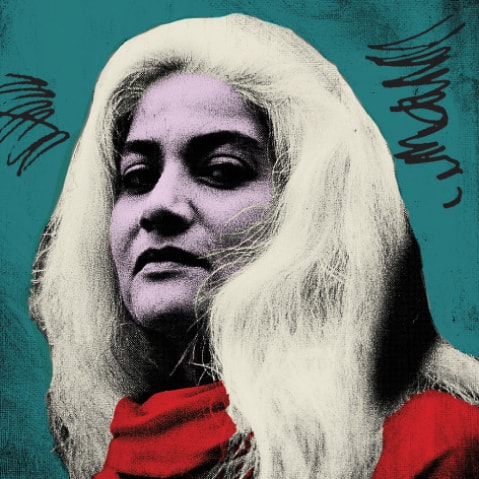
Last week I received an email announcing a commemorative session for the late Razia Sajjad Zaheer at the Pak Tea House, Lahore, by the Progressive Writers Association of Pakistan. Was I in a time warp? Is there still an active Progressive Writers Movement?
I was already on a search to understand why Pakistani films and TV dramas no longer had truly great stories or great actors, a search that had led me to the role of the Progressive Writers Movement — a group of engaged writers whom Bilal Zubedi and Dr Riaz Ahmed Shaikh call the “creative minority” — that gave us poetry, dramas and film scripts that defined the golden age of literature, cinema, radio and television.
Zubedi and Shaikh in their study Rise and Fall of Progressive Thought in Pakistan: An Appraisal of PTV Drama Tradition ( 2013), suggest that this creative minority established Pakistan Television Corporation (PTV), the sole TV channel till 1989, from management to creative programming — including Naheed Siddiqui’s classical dance programme Payal, Thursday Qawali, the quiz show Kasauti, the Zia Mohyedin show, and drama series Manto Rama — difficult to imagine in today’s loud, wrangling TV shows that do everything in their power to ensure we do not think for ourselves. The TV plays, for instance, Khuda Ki Basti, Jhok Siyal, Waaris, Deewarain, Qurbatein Aur Faaslay, Taaleem-i-Baalighan, with writers such as Amjad Islam Amjad, Ashfaque Ahmed, Munnu Bhai, Khawaja Moinuddin represent a society that was questioning and reflecting from a position of clarity rather than confusion.
State influence or outright repression is something creative industries all over the world face as has Pakistan. However, what made Ziaul Haq’s intrusions different were that they messed with our minds to an extent that we have internalised suppression. A generation has grown up with a ban on music and dance and no discussions of the arts and culture, a policy which has been perpetuated long after Zia. We do not even realise that we do not think anymore. The cultural silence is filled with social media, cable television and religious lectures. The tentative return of music and dance is in the context of entertainment not art or culture, with a few exceptions of Sufi music and The All Pakistan Music Conference (APMC) classical music festivals.
The internalisation has created another phenomenon — the atomisation of society into distinct social groupings based on religion, sects, ethnicity, clan or class — that do not engage meaningfully with one another, although they may work side by side. Assuming moral or political judgement, the conversations that matter are kept entre nous.
According to Muhammad Qadeer in his book Pakistan — Social and Cultural Transformations in a Muslim Nation, the seeds were sown long ago with the 1956 Constitution that emphasised provincial and ethnic differentiations, and, by what he calls the third — present — period in which ethnic, sectarian, religion and biradari divisions have spread into rural Pakistan while urban structures become fragmented.
Most people remain in their own social circle, except for what Qadeer calls ‘functional interdependence’, especially in urban communities, through use of common infrastructures such as roads, banks, offices, queuing for utility bills, hospital visits and traffic jams. There is little recognition of others. While this self-socialisation works at a pragmatic level, its most problematic aspects are seen in awkward cross-cultural interaction.
Early cinema and television dramas were produced, directed, written and acted in, by and large, by people the stories were about. This gave the films and television dramas an authenticity despite their technical shortcomings. Today’s actors and film professionals come from a wide range of social communities. Without rigorous training in acting schools, actors must depend upon observation and intuition. In a self-conscious and closed society, where true intimacy is not shared across social groups, or cautiously shared, characters tend to be portrayed as stereotypes.
The great opportunity that film and drama provide to have insights into the human condition in all its nuances and complexities is lost. To complicate matters, the stereotype itself has become more complex as social mobility changes lifestyles and values. Actors are required to be more immersive to represent the characters they portray, bringing their own insights to the script and direction. It is what made Uzma Gilani’s role as an Afghani in Panah and Salim Nasir’s portrayal of a transgender domestic servant in Anghan Terha so memorable.
Realism in acting only emerged in the mid-20th century when the Russian acting guru and director Constantin Stanislavsky, taught actors to strive for “believable truth.”
“I don’t think you can really be an effective actor if you’re not curious about people and events. And if you’re interested in things, you want to go deeper and you want to know more,” says Meryl Streep, the famous actress.
According to Tom Hanks, the celebrated American actor and filmmaker, “Everything I’ve ever done in a film, it requires this getting to some sort of emotional reality that is contrary to the actual setting that you’re in.”
Cinema is said to be a mirror by which we see ourselves and our past, revealing a reality we would be blind to otherwise, and the actor is the intermediary we must identify or empathise with. As the actor Philip Seymour Hoffman said, “Actors are responsible to the people we play.”
Durriya Kazi is a Karachi-based artist and heads the department of visual studies at the University of Karachi Email: durriyakazi1918@gmail.com
Published in Dawn, EOS, July 1st, 2018















































Dear visitor, the comments section is undergoing an overhaul and will return soon.